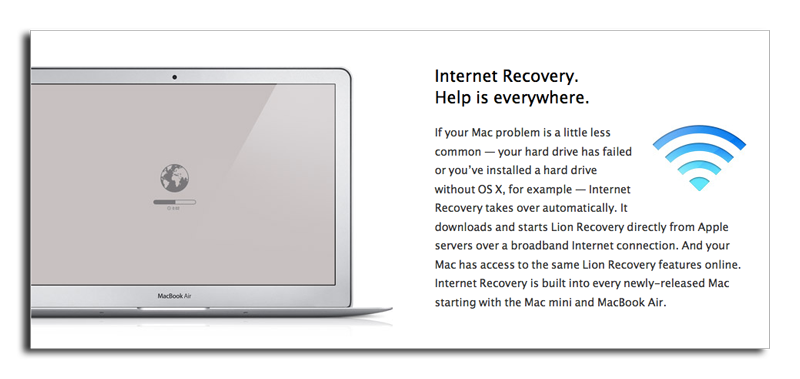

INTERNET RECOVERY MAC OS X INSTALL
(Note that this Utilities screen is the same one you’ll see if you create a bootable Mountain Lion install drive and boot your Mac from it.) After a brief delay, you’ll see the new OS X Utilities screen. Select Recovery HD and then click the upward-pointing arrow below it to boot from Recovery HD. However, you aren’t required to perform this step now, as you’ll also be able to choose a network once you’re booted into recovery mode.
INTERNET RECOVERY MAC OS X PASSWORD
If you’ll want to connect to your local network (for example, to access backups on a Time Capsule) or the Internet in recovery mode (see “Using recovery mode,” below), you can use the pop-up menu at the bottom of the screen to choose a local Wi-Fi network provide the network’s password when prompted. One of the volumes will be called Recovery HD. Restart or start up your Mac while holding down the Option key keep holding Option until the Startup Manager-a gray screen showing all connected, bootable volumes-appears. Hold Option at startup, and you can choose to boot from the new Recovery HD volume.

The alternate way On any Mac, you can access recovery mode using OS X’s Startup Manager:


If you ever needed recovery mode, you can boot into it using that external drive or thumb drive. If you were using Boot Camp, you’d then use Boot Camp Assistant to set up Boot Camp again, and then restore your Boot Camp data.Īlternatively, you could install Mountain Lion on an external hard drive or thumb drive, which would create a usable Recovery HD partition on that drive. Your only option, according to Apple, is to back up your drive (including your Boot Camp partition, if you have one), erase it (repartitioning it as a single-partition, Mac OS Extended volume in the process), reinstall Mountain Lion or Lion, and then restore your data from your backup. Unfortunately, if you didn’t already have a Recovery HD partition from a previous Lion installation, and the Mountain Lion installer can’t create the partition, you can’t add it later. So not everyone will get this useful feature. In addition, if your drive has a non-standard partition scheme-for example, if it’s part of a RAID, or if you partitioned the drive using Boot Camp Assistant and then tweaked the drive’s partitions later-the installer won’t be able to create Recovery HD. For starters, as Apple explains, the drive must be formatted with a GUID partition scheme and Mac OS Extended (Journaled) format, and it must be at least 13GB in size. (If the drive was previously running Lion and already has a Recovery HD partition, the Mountain Lion installer simply updates the partition’s contents.) I say “attempts” because the installer is not always successful. When you install Mountain Lion on a drive, the installer automatically attempts to repartition that drive to create the invisible Recovery HD partition. Why you might not have a Recovery HD partition Separate from-but closely related to-OS X Recovery is a feature called Internet Recovery, which provides similar features even if your Mac’s drive is damaged or has been replaced. Also, because the Recovery HD volume is read-only, you can’t, say, copy your favorite third-party disk utility onto it to make that utility available in recovery mode. In other words, recovery mode won’t save you from every problem, and it’s no substitute for having a reliable, regularly updated backup. Of course, because the Recovery HD partition is actually part of your Mac’s internal drive or SSD, if that drive is having hardware problems, or partition-map problems, the recovery partition itself may be inaccessible. In fact, because Recovery HD is a separate partition-and one that’s invisible even to Disk Utility-recovery mode would be available at startup even if you were to erase your Mac’s startup drive. The idea behind recovery mode is that if you ever have problems with your Mac’s startup volume, you can boot from Recovery HD and perform some basic troubleshooting procedures without the need for an OS X installation DVD or thumb drive, or a separate bootable drive. (It was called Lion Recovery under Lion.) When you install Mountain Lion or Lion, the installer creates an invisible, bootable, 650MB partition-a portion of a drive the operating system treats as a separate volume-on your startup drive called Recovery HD that includes a few essential utilities for fixing problems, restoring files, browsing the Web, and even reinstalling the operating system. A major feature that debuted in Lion (OS X 10.7) and continues in Mountain Lion (OS X 10.8) is one I hope you’ll never need to use: recovery mode, officially called OS X Recovery.


 0 kommentar(er)
0 kommentar(er)
